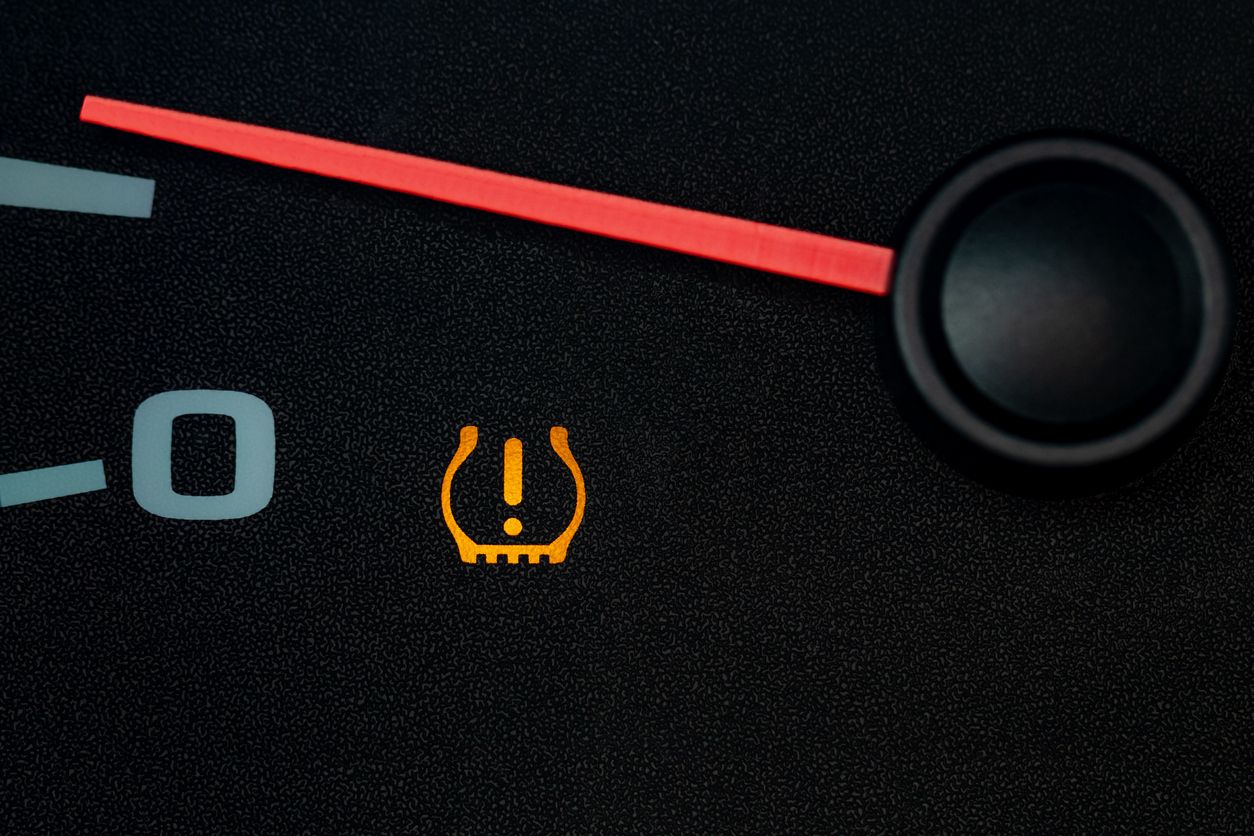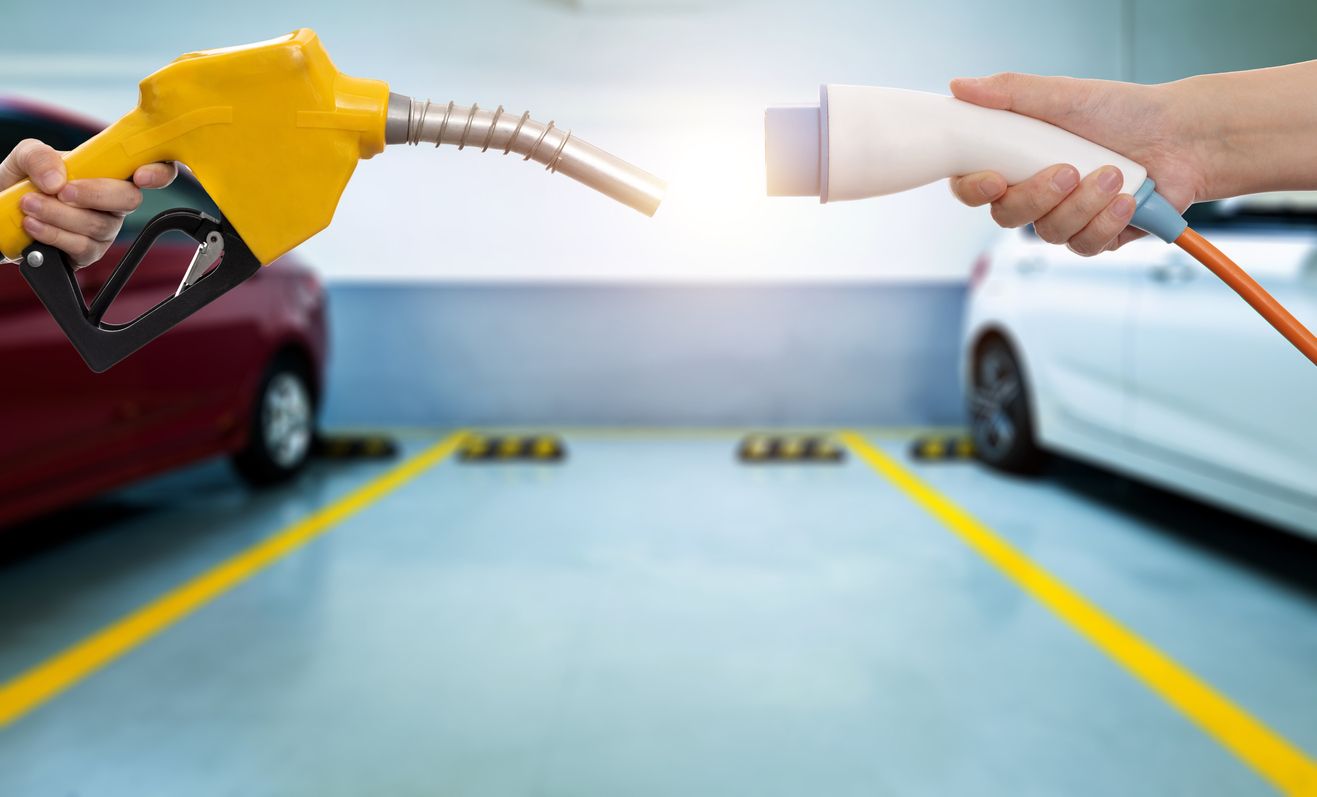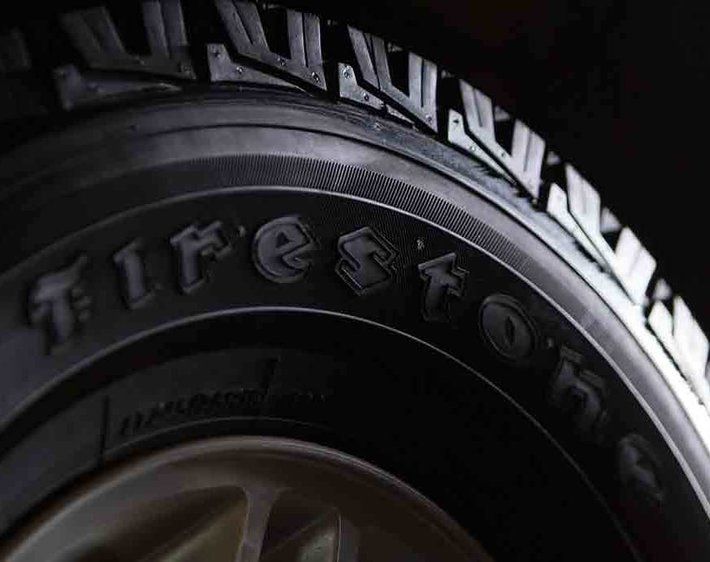Each time you start your car, all your dashboard warning lights illuminate briefly. If you’ve seen a yellow light showing an exclamation point within a tire cross-section (looks similar to a horseshoe), that’s the TPMS — or Tire Pressure Monitoring System. All cars made after 2007 are required by law to have this feature, thanks to the TREAD Act.
The TPMS is an electronic system that monitors the air pressure inside your tires and warns you if a tire becomes significantly underinflated. But how do tire pressure monitoring systems work, and what are the different types? Keep reading to learn the answers to these questions and more.
What Are the Benefits of TPMS?
The TPMS notifies you when your vehicle’s tire pressure is low or going flat. Tires can lose air pressure if there is a puncture or leak. They may also lose pressure naturally over time and as temperatures drop. By helping you maintain proper tire pressure, the TPMS can help maintain your safety on the road by helping to preventing your vehicle’s handling, tires, braking distance, and fuel economy from suffering.
Do You Still Need to Check Your Air Pressure If You Have a TPMS?
Yes! While the TPMS can alert you to a tire pressure issue, you don’t want to rely on the system alone. The TPMS light is only triggered when the air pressure drops below the recommended specification by 25%. That’s a big decrease. By staying on top of monthly tire pressure checks at home, you can catch issues before they reach the extremes needed to activate the TPMS.
How Does a TPMS Work?
Depending on your vehicle's TPMS type, it may work differently than the TPMS in another vehicle. The two types of TPMS are direct and indirect.
Direct TPMS
Ever wondered, “What are TPMS sensors?” They’re an essential part of direct systems.
Direct systems have tire pressure sensors located in the wheel assemblies that transmit data to your vehicle’s computer system. It measures the tire’s pressure and sends a signal to the dashboard when the air pressure drops too low. You’ll see the TPMS light illuminate on your dashboard in response. Depending on your vehicle, your TPMS might even show you each tire’s PSI as a pictogram on your dashboard menu.
Since each tire has a sensor, and these sensors are dedicated solely to monitoring tire pressure, direct systems tend to be more accurate. This accuracy does come with additional cost, though.
Tires equipped with a direct TPMS are slightly more expensive to maintain because proper care requires extra parts and labor. The valve service kit — which includes the valve core, cap, nut, and o-ring (seal) — must always be replaced when a tire is dismounted for service or replacement. A special TPMS tool and additional time are often needed to check and reset the sensor system. In the event pressure sensors need to be replaced, you could be set back a few hundred dollars.
Indirect TPMS
Vehicle manufacturers developed indirect tire pressure monitoring systems as a more affordable way to comply with the TREAD Act. Instead of using completely new sensors, an indirect system uses the wheel speed sensors in the Antilock Braking System (ABS).
The vehicle computer uses the rate of revolution to compare one wheel’s speed to another wheel. So, if one wheel starts to spin faster than the others, it’s a sign that the tire is shorter in diameter and is likely underinflated. The ABS will signal the computer to activate the TPMS light on your dash.
Need help identifying which system you have or want to learn more? The expert technicians at your local Firestone Complete Auto Care are happy to answer any of your questions.
TPMS DASH ICONS
This means that one or more of your tires is significantly under-inflated.
This means that the right front tire is significantly under-inflated. With the TPMS, one of these symbols will light up on the dashboard when any tire is 25% under-inflated.
What to Do If Your TPMS Comes On
If your vehicle’s TPMS warning indicator light comes on — and stays on — you have a tire pressure problem. First, check the air in all your tires, find the underinflated one, and fill it back up to the recommended PSI.
A tire pressure issue could indicate a bigger problem, like a puncture or leak. Stop by Firestone Complete Auto Care, and our experienced technicians will take care of you. We’ll check your vehicle’s tire pressure and perform a systems test on your tire sensors to diagnose the problem if needed.
Once our technicians address your vehicle’s tire needs, they’ll suggest the proper maintenance or repair needed to get you back on the road.
Why Is My TPMS Light Blinking?
Extreme temperature changes can cause your tire pressure to fluctuate. A drop in ambient temperature may trigger your TPMS, causing the light to turn on. The temperature of the air inside the tire may also warm up just enough to turn off the light after driving a few miles. Tire pressure fluctuation is normal, but if this scenario is happening to you, your tire pressure is at the edge of triggering the light and needs to be addressed. Take a moment to check your tire pressure.
However, if your TPMS light consistently flashes or stays on, it could mean there’s trouble with the sensors. Head to your closest Firestone Complete Auto Care for a TPMS service. We’ll help diagnose the problem and get you back on the road with the essential safety feature working again.
Why Is My TPMS Not Working?
Did you discover your tire pressure is extremely low during one of your monthly checks, but the TPMS never gave you a heads-up? There’s likely a problem with your system. A low or dead sensor battery is one of the most common causes of a TPMS problem.
TPMS batteries should last 7 to 10 years, but they may die earlier due to damage or corrosion. Unfortunately, you can’t just swap out the battery — you’ll need a full sensor replacement. Once one battery goes, the others are likely not far behind, so it’s recommended you replace all sensors at the same time.
Get TPMS Repairs and Maintenance at Firestone Complete Auto Care
Don’t ignore your TPMS light! Whether the TPMS light came on and you have a tire pressure issue or your TPMS isn’t working as it should, the pros at your local Firestone Complete Auto Care are happy to help. We’ll get to the root of the issue and suggest the best repair plan to get your vehicle back in great shape. Plus, we carry high quality TPMS sensors for almost any vehicle.



